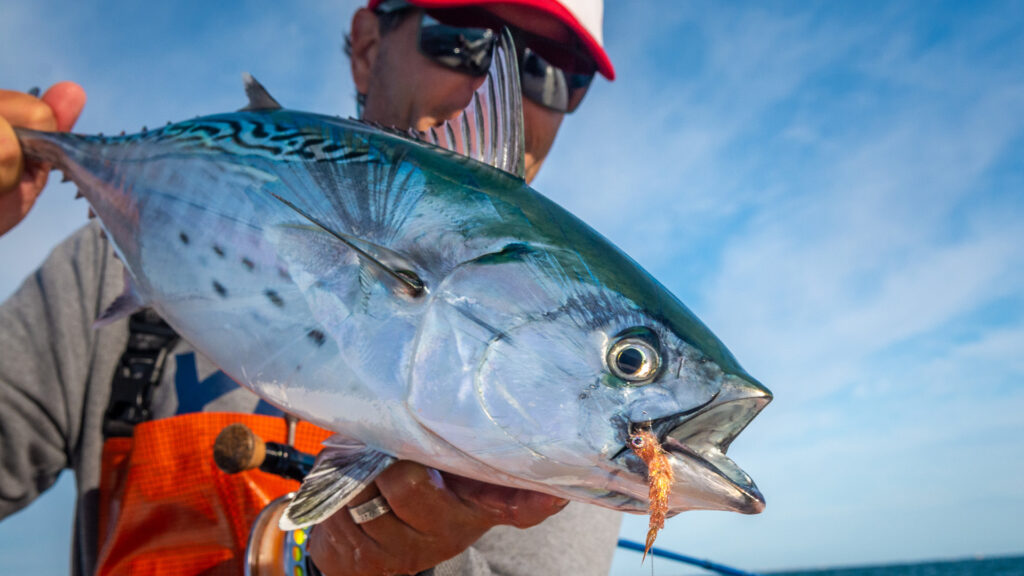I started my saltwater fly-fishing quest nearly eight years ago when I lived in Tampa, Fla. Having spent most of my life inland, I had visions of daily tailing redfish.
Reality quick set in that spring. I saw a handful of fish my first few months, and that learning curve didn’t happen by accident.
Fly fishing for reds is largely a winter pursuit. Sure, there are exceptions. Tailing reds in the grass are summer and early-fall affairs on the Northeast Florida, Georgia and South Carolina coasts, but generally speaking winter beats summer almost every time for quality reds with a fly rod or light spinning gear.
Here are a few tips I learned along the way to this realization. A few of these nuggets of info may help you if you have time to fish the flats before spring and summer arrive.
Sleep In
You want to fish late in the day, if possible. Pick a later tide and get out when the sun has had a chance to warm the water. Can you get out early? Yes, but early birds will often be disappointed by sluggish, lethargic fish.
If the stars align and you find a strong afternoon tide, mud flats produce the best results. Reds often use the heat of the dark bottom to warm up. A word of caution: Do not get out and wade. Muddy flats rarely yield secure footing.
Tidal Tips
Fish when you have time, but if you can, schedule your outings around a strong incoming tide. Reds often feed on moving water and the less water you have to deal with means two important things: The fish have fewer places to go; and equally important, they’re easier to see in skinny water.
A negative low afternoon tide is ideal, but it’s not crucial. You can live with an extra inch or two of water, so don’t stay home because you don’t get the perfect tide.
As far as depth, I like shin to knee deep height, which amounts to about a foot or so. It’s enough water that the fish feel relatively secure, and you should be able to notice a few wakes and maybe a tail or two.
The Wind Is Not Your Friend
Wind is a reality of saltwater fishing. A breeze of 10 miles an hour or less works for me. If the wind picks up, I generally try to find a leeward shoreline. Many anglers only take wind into account as it relates to casting, but even more important is the wind’s effect on tidal flow.
In Tampa Bay, for instance, a south wind pushes water into the Bay; a north wind, by contrast, pushes water out of the Bay. Generally, you want a north wind, at least in Tampa Bay. The goal, of course, is to fish a flat with as little water as possible.
Wind can also delay the tide. True story: I went out with a guide near Fort Desoto in St. Petersburg, Fla. Tails were everywhere. The next day, I went out solo and didn’t see a single tail on the same flat on the same tide. The reason: A steady breeze held up the tide. There wasn’t enough water for the reds to come up on the flat, and unfortunately I didn’t push out a bit farther towards slightly deeper water where the fish were holding. It was a matter of wading out a few hundred yards, but I wasn’t confident enough to adjust.
Flies and Equipment
You can’t go wrong with an EP Crab (size 4) in brown or tan. I tie them toad style, but I’m not sure the shape really matters. A mylar spoon fly is my go-to for a searching pattern. A dark Clouser is always a good stand-by for just about any species, saltwater of fresh.
As far as conventional lures, a Gulp shrimp or gold spoon are good go-to options and should be in anyone’s saltwater tackle box.
My go-to fly rods are the TFO’s Axiom II. Before that, I was smitten with the Lefty Kreh’s TiCR X. The AII adapts to your stroke. I’m a fast-action caster and it loads quickly with enough juice to pierce a formidable breeze. Pair the AII with a Power Reel and you have a quality saltwater setup that will handle just about any fish on the flats.
For standard gear, TFO’s GIS inshore series offers an array of sticks to match your saltwater needs, durable enough to handle just about any situation, sensitive enough to provide just the right feel and good-looking enough to impress your buddies back at the dock.
Try these tips with your favorite TFO gear. Let us know how you fare.






